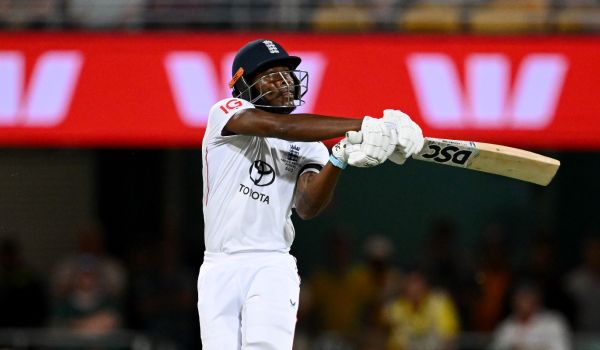The fast-tracking of George Garton: Rapid left-armer, self-aware introvert and still just 23 years of age
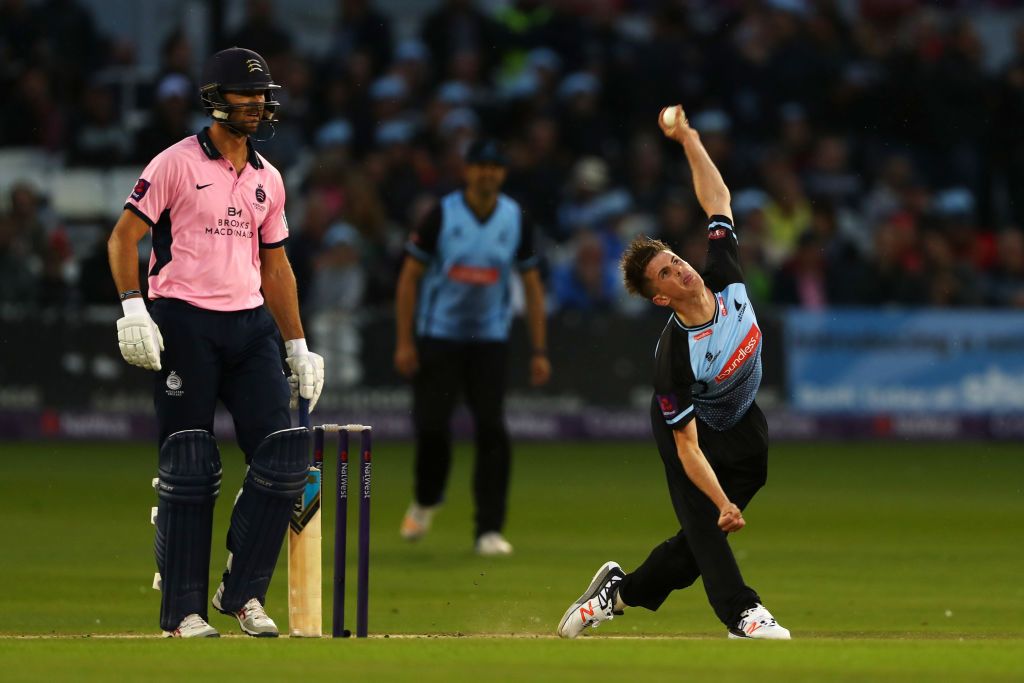
By Nick Friend
George Garton's skillset is the prototype of English cricket's obsessions: pace like fire, an action like a balletic greyhound, a modern athlete. Here he is, talking openly about himself, his game and the mindset of a fast-tracked commodity.
What stands out most from forty minutes in Garton’s company is a level of self-awareness that belies his years.
Not once does he leap into an answer without first stopping for breath and a moment of introspection. When each pause comes to an end, the words that follow are thoughtfully strung together; he doesn’t do clichés.
There is a vulnerability to the candour of his reflections, but also a refreshing confidence in his own ability – hardened in recent months by a strong showing at the Abu Dhabi T10 League, where he was the top wicket-taker, and a subsequent trial with Rajasthan Royals that, while ultimately fruitless, offered him a reminder of the esteem in which he is held.
He is 23 now, which sounds almost ludicrous. It feels as though he has been through too much to be so young: ever since word first got around, Garton has been a marked man – too quick to ignore, too exciting not to stir the imagination of all those watching.
Rewind two winters to November 2017; as Jake Ball struggled with an ankle injury, it was in the direction of Garton that England turned. With an Ashes series on the horizon, he arrived in Townsville as cover for a week – fresh-faced, wide-eyed and bearer of a unique talent.
His life as a first-class cricketer was in its embryonic stage; at that point, it amounted to just 1,225 deliveries and 23 wickets, 19 months and nine appearances on from his debut.
It was a leap of faith in a 20-year-old, whose skillset is the kind that understandably entices a fast-tracking through the ranks: pace like fire, an action like a balletic greyhound, a most modern athlete.
He had made his England Lions debut a year earlier in a 50-over tri-series as a teenager, having then featured in just four List A games.
And yet, two years on from Australia, there have been only four further County Championship outings and five more wickets.
It is where we start, with a single word: hype. How challenging has it been? How do you possibly avoid it? Do you resent it? A rapid left-armer, a gun fielder and an ever-improving batsman, Garton is a prototype of English cricket’s obsessions.
“I don’t know,” he admits. “It’s a good question.
“Because there aren’t too many of me, suddenly there’s more pressure on you because everyone is hoping for you to do well. But it’s not really a pressure you put on yourself. From experience, it only really negatively affects you because you don’t want to be thinking you’re better than you are.
“Almost, you’re put in positions that maybe you don’t deserve straight away because people want to fast-track you through stuff.
“It’s a different situation to what most people get put in. At the time of the Ashes, I was fashionable, if that’s what you want to call it. You get fast-tracked into stuff and hopefully you land on your feet.
“That’s fine but I don’t like to focus on it personally because it only really takes your mind off your own goal of trying to succeed and be where you want to be.”
The biggest challenge, he admits, has come in learning to differentiate between the potential seen in him and the reality of the present. He has had to get to grips with the nuance. “As an 18-year-old kid, you can’t – just because someone likes you at the ECB – go: ‘Hang on, I should be playing every game.’”
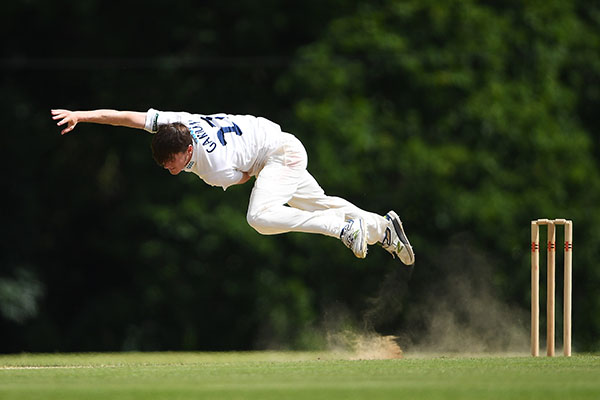
Since debuting in 2016, Sussex’s attack has included – among others – Steve Magoffin, Ollie Robinson, Jofra Archer, Chris Jordan, Tymal Mills, Reece Topley, David Wiese and Mir Hamza; simply returning from a Lions trip into a side packed full of fine bowlers has never been an option, whatever the format.
“I can’t expect to walk into the team just because England like what they see and have fast-tracked me through the bowling programme,” he says. “It took me some getting used to – to understand that, okay, there’s that potential there that people see and I want to fulfil, but at the moment it’s still potential.
“You kind of ask: ‘Well, hang on. If I’m good enough for the Lions, then how come I’m not good enough for Sussex?’ But that’s not the case. It’s just that you have an established group that have performed better than you have and have more experience.
“They have the right to play ahead of you because of what they’ve achieved and how they’re playing. You can’t just walk in. I’m not like Jimmy Anderson walking back into Lancashire. I have to earn my place; I want to earn the right to play for Sussex.”
Garton is forever learning. He raves about the days he spent among Joe Root’s group; for a naïve boy making his way in the game, it was a priceless, surreal time, drafted in on a whim. “With the stuff I’ve been fortunate enough to be exposed to from such an early age, it feels like I should be an old stalwart now,” he laughs. “But I’m still 23.” It is a useful reminder; cricket has a tendency to resort to impatience in situations like this.
Then, for a brief moment he goes silent. Talk has turned to “a strong case” of white-line fever and, more widely and more eye-opening, the personal development of a reserved character, much of which was enabled by his pre-Ashes experience, where he became aware of “how I conduct myself, how I present myself to people”.
It is clear that he has thought long and hard about this before – ‘People would describe me as... not very pleasant’ read the headline of an Independent interview ahead of the 2018 season.
Garton is highly impressive throughout, but never more so than at this juncture; there is a rare detail and a remarkable honesty to his self-analysis. He offers up a depth in his response that is not necessarily typical.
“I’m a very introverted person and I don’t give much away,” he acknowledges. “Sometimes, I don’t communicate exactly how I feel. Because I do have a bit of a poker face, my coaches don’t know if I’m happy or not, even if I’ve done well or done badly.
“It’s about me understanding how I come across to people and how my body language comes across to people. A lot of people ask me if I actually enjoy playing cricket. And I go: ‘Yeah, I bloody love playing cricket.’ Obviously, I can’t see my own face or my own body language, but I don’t give a lot away.
“So, understanding that people are looking at me and I should present how I’m feeling better is really important. That can only lead to better relationships with other players, coaches, management and that kind of stuff. I guess a happier George is a happier dressing room when it comes to how people perceive you.”
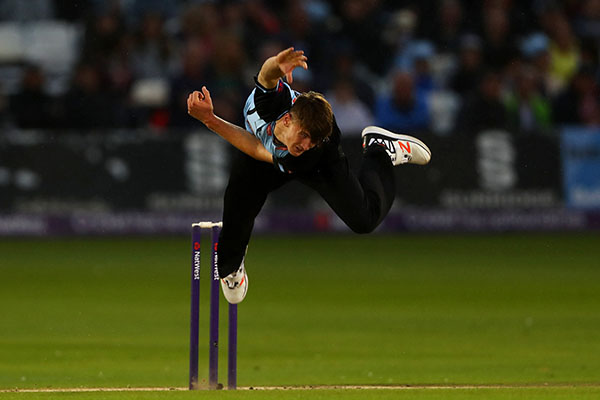
It is not a new challenge. He has known since his father would point it out to him as a child that he has been prone “not to show much happy emotion unless something really good is happening”.
“Even from a family aspect, they get frustrated that I don’t smile all the time and I don’t look so happy.
“Growing up from a young age, I’ve learnt that I need to show my emotions a bit more, but we’re lucky at Sussex because we are such a close-knit team. Players will come up to other players and question them and say: ‘Come on mate, give us a smile’ or ‘Are you upset?’ or ‘Do you want to talk about something? Is there something I can help with?’
“I don’t want to be a false person. I’m always going to be who I am – I might look a bit miserable or sound a bit grumpy. But if I can maybe change one or two per cent to give a more positive outlook on my body language, then I think that’s a benefit.”
None of that is to take away from a lifelong love for cricket. “That’s just me,” he adds. “I don’t put any of that on. I will try my nuts off to try and win. I just think I’m very competitive. People don’t see a smile on my face until we’ve crossed the line and we’ve won.”
It is hardly an unusual attitude among fast bowlers, though it is a fascinating quirk of Garton’s rise that his pace only emerged in his latter teenage years. Until he was 18, wicketkeepers stood up to the stumps as the left-armer looked to nibble his way through opposition defences. On a Sussex Academy tour of South Africa in 2012, he had three batsmen stumped.
The opposite is now true – any nibble has been replaced by a capacity to swing the ball late and, more pertinently, to blast his way through. His slingshot action has been clocked at 93mph, while his array of slower-balls and variations shone in Abu Dhabi. One tailender he removed last year told The Cricketer that facing Garton was “unpleasant – a bit like a whirlwind. He removed my leg stump quite forcibly”.
Garton’s highlight reels are worth a watch, not only because of the dynamism of his approach and the splatter of stumps (his first ever County Championship wicket – of Richard Levi – sent the South African’s off-pole flying back five metres), but also because of the journey he has been on.
Put simply, he has grown into an action that has hardly ever been changed by coaches – the result, at least in part, of his mother’s decision to enroll him in gymnastics classes as a youngster. “I think it’s really helped having a foundation in that for my cricket and letting my muscles be as flexible as possible,” he says. Watch him bowl and it will all make sense – the high legs, his body’s elastic contortion. He has been that way since he was 12, only now he’s quicker.
“It was a weird feeling to then go into the nets and suddenly batters – instead of being happy to face me – tried to avoid me a bit,” he adds.
Other than injuries – he has suffered two side strains in the last two years, the major learning curve has come in marrying this pace to his radar. One without the other is futile. “When you get to a certain standard,” Garton explains, “bowling fast just means that the ball goes faster to the boundary if you don’t bowl it in the right place.
“It’s finding that optimal place between consistency, accuracy and taking advantage of a unique ability. I don’t want to detract from the ability to bowl fast because that’s what sets me apart from some other people, but then I don’t want to be the person where people are like: ‘Yeah, he can bowl fast but he’s got no idea where the ball’s going.’ Because that doesn’t help either.”
Has he found the transition enjoyable, his ability to scare and intimidate like a new toy? “It’s definitely a different game,” Garton chuckles. “It’s still something that I’m learning. I’m learning about setting batsmen up – whether you’re trying to push them back and then hit them on the toe, or vice versa.
“But I’ve always been an angry fast bowler at heart. Even when I was bowling with the keeper up, I didn’t like people driving me down the ground. I was always quite an angry person. I guess bowling fast came naturally to my mindset too, so I took to bowling bouncers like a duck to water – I found it quite fun.”
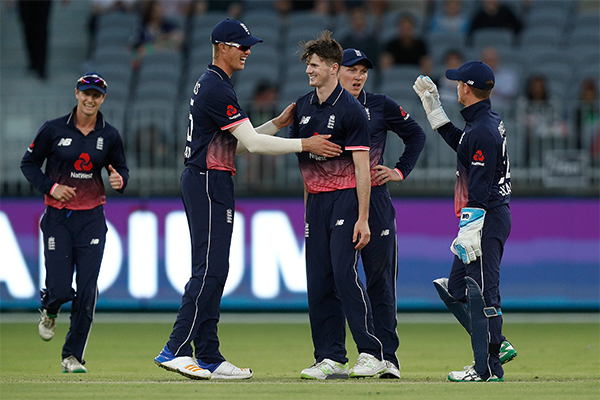
He has also been working on his batting; he grew up as an allrounder and described himself as such ahead of the 2019 campaign, before ending the season with successive red-ball half centuries. Spending a portion of this most recent winter in Australia working alongside Trent Woodhill has only solidified his ambitions going forward.
There have been second team hundreds against both Middlesex and Leicestershire to go with Championship fifties against Derbyshire and Worcestershire – proof and validation for the work he has put in; he credits Michael Yardy with instilling the focus in him to work at his game.
“It’s like a cycle, I guess,” he says. “When you’re in a team for your bowling, people want you to bowl. And then, the batting opportunities get less, so you don’t work on it as much. It took a more personal approach from me to go: ‘Hang on, I know I can bat. Let’s put a bit more emphasis on it and work a bit more.’
“Whether that means staying behind after training or a spot opens up in the nets, it’s just about pushing in a bit more and making a conscious effort.”
During a winter in Australia that was meant to include a club cricket stint before visa issues restricted him to a training brief, Woodhill became a big influence. The renowned batting coach has worked closely with Steve Smith.
“The first thing Trent did for me was chuck me in a net and say: ‘Right, I want you to hit the ball as far as you can and from that, I can work out what type of player you are, what type of fundamentals you need to succeed. What can I do to make you better?’
“He doesn’t try to change your technique. He just tries to help to make you as consistent as you can, so that when you do go out to the middle, you don’t need the first 20 balls to start feeling good. Rather, when you go out there, you feel good straight away. He was brilliant for me at identifying what a good position looks like.”
It is hardly rocket science, but a multi-dimensional cricketer is worth more than one reliant on a single skill. He reiterated the point to Sussex’s official Youtube channel after the final game of last season.
Garton had to persuade his father during his senior school days at Hurstpierpoint College to let him plump for cricket over university. He applied to read economics and business at Loughborough as a compromise, but on the proviso that if he made his grades, then he could – as a reward – try instead to make it in the sport.
“I said to him that I could go to uni when I’m 60,” he recalls. “I don’t have to go now, but I can’t play professional cricket when I’m 60. I have a certain shelf-life and I don’t want to cut into that if I don’t have to.”
The ECB’s new fast bowling contracts – currently held by Saqib Mahmood, Craig Overton and Olly Stone – have provided added motivation, an in-between goal “where the ECB have control over certain workloads and they have a close eye on you, while allowing you to play for your county”. Garton views it not as an objective to work towards, but as a prize that will come with success.
An off-season that began with a family holiday in the United States and was then spent on the franchise circuit has opened his eyes to the wider world. He is keen to further broaden his horizons, but the dream has not changed. “My aspirations are still playing Test cricket for England and playing all three formats,” he stresses.
He’s not there yet – he knows that, even if being fast-tracked at times led him to believe otherwise. But George Garton, with a skillset fit for the biggest stage, is made of the right stuff.
This article originally featured in The Cricketer. To remind ourselves of happier times, The Cricketer is offering a £20.19 subscription to celebrate England’s World Cup win once again. Visit www.thecricketer.com/celebrate to take advantage.





